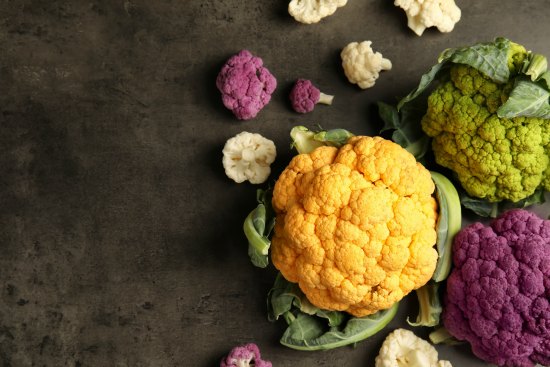Cauliflower is not only packed full of nutrients, but it’s also easy to grow and can withstand some mild frosting into winter. We eat cauliflower all the time, and this year, we were able to grow it in our greenhouse and it actually survived last week’s frost!
NUTRITIONAL FACTS
Cauliflower is a great substitute for a high carbohydrate starchy side dish. One serving of cauliflower contains 100% of the daily recommended amount of vitamin C! Additional nutritional facts include:
- 25 calories
- 0 grams of fat
- 5 grams of carbohydrates
- 2 grams of dietary fiber
- 2 grams of sugar
- 2 grams of protein
- 30 milligrams of sodium
GROWING CAULIFLOWER
Cauliflower belongs to the cabbage or cole family (Brassica oleracea). Like most cole crops, it requires cool weather and grows best when daytime temperatures are between 65 and 80 F. The trick to growing cauliflower is consistently cool temperatures, so when you plant one in your homestead timing is of the essence to catch the temperature which is most suitable for it to flourish.
Cauliflower also grows best in soils rich in organic matter and plenty of calcium. Moist, well-drained soil with a pH between 6.5 and 6.8 is required for optimum growth and to discourage clubroot disease. Sow cauliflower seeds ½ inch deep and set them at least 24 inches apart in the row with 30 inches space between rows.
Keep the soil moist. Also, it is best to perform a soil test first to determine fertilizer and lime application. However, in the absence of a soil test, 2 to 3 pounds of 8-16-16 fertilizer applied uniformly over 100 square feet of the garden area is suggested. Work the fertilizer thoroughly into the soil about two weeks before planting time.
Root rotting is a common disease with cauliflowers. Prevent root rots by keeping the garden free of debris and avoiding handling plants when they are wet. Immediately remove and destroy infected plants to prevent it from spreading to other seedlings.
Harvesting
Knowing when to harvest cauliflower is critical. The head is usually ready about a week or so after blanching them. Mature cauliflower heads can range in size from 6 inches to 12 inches across. Harvest when the buds are still tight and unopened. Use it or preserve it right away.
Once you harvest cauliflower, enjoy it!
THE WORLD’S BEST CAULIFLOWER RICE
A favorite in my house is cauliflower rice. Here’s how I make it, and so far, everyone likes it better than white rice.
CAULIFLOWER RICE
Ingredients:
- 1 large head of cauliflower, or two small heads
- 1/2 medium onion chopped
- 2 garlic cloves, minced
- 1 Tablespoon Ghee oil (you can use butter)
- Salt and Pepper
Directions:
Dice the garlic and onions. Grate the cauliflower (I use a cheese grater), but you could use a food processor. Heat a skillet with ghee oil in it. Add the onions and garlic. Once the onions and garlic are softened, add the cauliflower rice, and a little more oil if you prefer. Heat the cauliflower and stir frequently. Add salt and pepper if you prefer.
Serve as you would serve rice! We eat this plain as a side dish several nights per week.
This article was originally published at Ready Nutrition™ on October 29th, 2020







